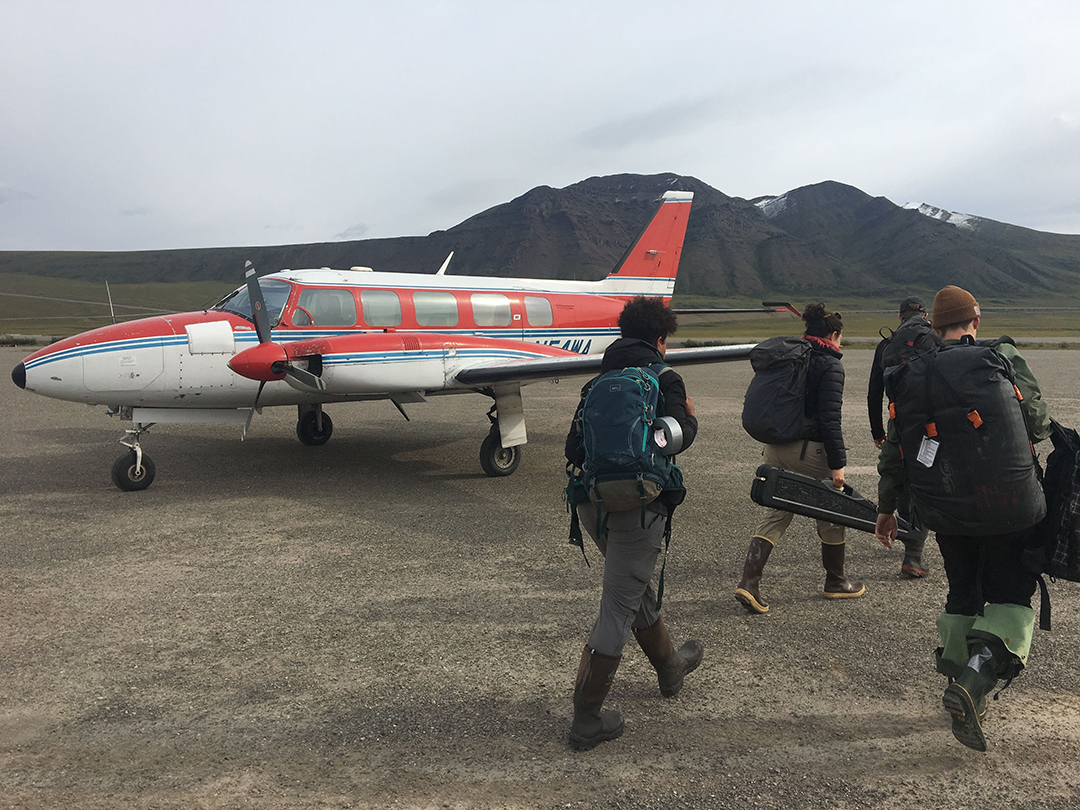By Kristen Mitchell
A Columbian College of Arts and Sciences research project that tracks the conditions of permafrost in the Arctic was awarded $1.2 million from the National Science Foundation to continue one of the longest-running observations of a region most vulnerable to climate change.
The Circumpolar Active Layer Monitoring (CALM) project, led by Associate Professor of Geography Nikolay Shiklomanov, has been collecting and analyzing data on permafrost for more than 20 years. Permafrost is a ground that remains frozen for at least two consecutive years. It underlies approximately 25 percent of the land in the Northern Hemisphere, including the majority of Alaska, Canada and Russia.
Scholars began studying permafrost to better understand the engineering implications and long-term stability of infrastructure built on frozen ground. Today, however, permafrost has become front and center in the global conversation about climate change—which makes the data Dr. Shiklomanov and his international collaborators have amassed from more than 200 Arctic and sub-Arctic sites extremely valuable.
“For some of these sites we have 25 years of records, and we are now beginning to see some really interesting stuff,” he said. “We clearly see how permafrost at some of our sites, especially in the Eurasian Arctic, have started to degrade completely.”
As permafrost thaws, it releases long-trapped carbon into the atmosphere. Researchers have observed that in some areas the southern boundary of permafrost has been shifting north, Dr. Shiklomanov said.
Compared to mid-latitudinal regions, there is little data available on the Arctic region. The data collected through the CALM program is frequently used as part of official reports and climate assessments. The data collected over more than two decades allows researchers to look at trends and changes over time.
The five-year renewal grant from NSF will enable researchers to increase the number and quality of observations taken at CALM network sites, Dr. Shiklomanov said. The grant will also provide funding for the logistical support associated with field work in the challenging Arctic environments. The project is collaborative with the Northern Michigan University and involves cooperation with researchers from 14 countries on data collection missions. Aside from Alaska, the grant will partially support observations in the permafrost regions of Eurasia. This will be done in close collaboration with eight Russian research and educational institutions.
Undergraduate and graduate student researchers play a critical role in the data collection process. Every summer GW students are provided with the opportunity to participate in field research in Alaska and/or Siberia as part of the CALM project.
Nina Feldman, B.A. ’17, a second-year graduate student studying geography, traveled to Russia in 2017 and Alaska in 2018 to do fieldwork as part of this project. She traversed the state, going as far as Barrow, Alaska, the northern-most city in the United States.
Ms. Feldman, who is also pursuing a graduate certificate in geographical information systems, took Dr. Shiklomanov’s class on Arctic systems as an undergraduate and decided to continue her education at GW to stay involved with the CALM program and other research projects. She is passionate about urban sustainability in the Arctic and learning more about how the region is impacted by climate change.
“For most people, it’s not on their radar, especially when it comes to climate change. People focus on urban cities in the U.S., rising sea levels and whatnot,” she said. “But people in the Arctic are actually living through climate change. You go there for like a month, and you can actually see what is happening and how it is impacting them.”
The CALM program launched in 1991. It was initially affiliated with the International Tundra Experiment. It has been independently supported through NSF grants since 1998.



